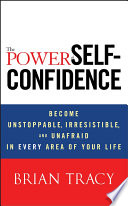

Self-confidence is the cornerstone of personal and professional success. It shapes how we view our abilities and influences our decisions. When individuals possess self-confidence, they are more likely to take risks, pursue opportunities, and overcome obstacles. This idea delves into the psychological aspects of self-confidence, illustrating how it affects our mindset and behavior. The book emphasizes that self-confidence is not an inherent trait but a skill that can be cultivated through practice and positive reinforcement. By understanding the significance of self-confidence, readers can begin to recognize its impact on their lives and strive to enhance it.
Continue readingSelf-doubt is a common barrier that prevents individuals from reaching their full potential. The book outlines strategies for overcoming self-doubt, such as reframing negative thoughts, setting achievable goals, and celebrating small victories. It discusses the psychological roots of self-doubt and how it can be a learned behavior stemming from past experiences or societal expectations. By addressing self-doubt head-on, individuals can dismantle the mental blocks that hinder their progress and build a stronger foundation of self-confidence.
Continue readingGoal setting is a critical component of developing self-confidence. The book emphasizes the importance of setting clear, measurable, and attainable goals. It provides a framework for effective goal setting, including the SMART criteria—Specific, Measurable, Achievable, Relevant, and Time-bound. By breaking down larger aspirations into smaller, manageable tasks, individuals can create a sense of accomplishment as they progress. This incremental approach not only boosts self-confidence but also fosters a proactive mindset that encourages continuous growth.
Continue readingPositive thinking is a powerful tool in building self-confidence. The book discusses the benefits of maintaining an optimistic outlook and how it can influence behavior and decision-making. It explores techniques for cultivating a positive mindset, such as visualization, affirmations, and gratitude practices. By focusing on the positive aspects of situations and reinforcing self-belief, individuals can create a more empowering narrative for themselves, which in turn enhances their confidence and resilience.
Continue readingOur environment plays a significant role in shaping our self-confidence. The book highlights the impact of social circles, workplace culture, and external influences on our self-perception. It encourages readers to evaluate their surroundings and identify relationships and environments that either support or undermine their self-confidence. By surrounding themselves with positive influences and seeking out supportive communities, individuals can create a conducive atmosphere for personal growth and confidence-building.
Continue readingFear is a natural response to uncertainty, but it should not paralyze individuals from taking action. The book emphasizes the importance of facing fears and stepping outside of comfort zones to build self-confidence. It provides practical strategies for managing fear, such as gradual exposure to challenging situations and reframing fear as an opportunity for growth. By taking action despite fear, individuals can expand their comfort zones and reinforce their self-confidence through experience and accomplishment.
Continue readingSelf-confidence is not a destination but a lifelong journey. The book concludes with the idea that building and maintaining self-confidence requires ongoing effort and self-reflection. It encourages readers to embrace challenges, learn from failures, and continually seek opportunities for growth. By adopting a mindset of lifelong learning and resilience, individuals can sustain their self-confidence and navigate the complexities of life with greater assurance.
Continue reading